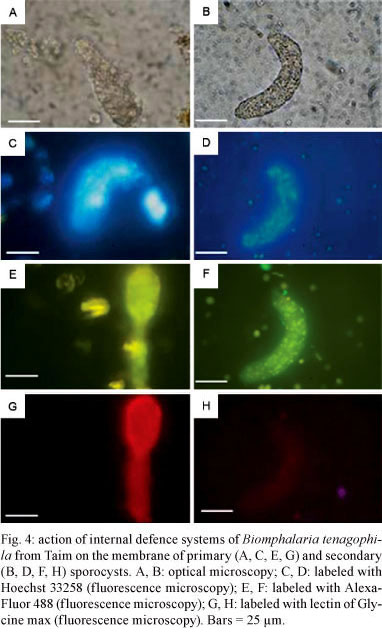The outcome of the interaction between Biomphalaria and Schistosoma mansoni depends on the response of the host internal defence system (IDS) and the escape mechanisms of the parasite. The aim of this study was to evaluate the responsiveness of the IDS (haemocytes and soluble haemolymph factors) of resistant and susceptible Biomphalaria tenagophila lineages and Biomphalaria glabrata lineages in the presence of in vitro-transformed primary sporocysts and secondary sporocysts obtained from infected B. glabrata. To do this, we assayed the cellular adhesion index (CAI), analysed viability/mortality, used fluorescent markers to evaluate the tegumental damage and transplanted secondary sporocysts. B. tenagophila Taim was more effective against primary and secondary sporocystes than the susceptible lineage and B. glabrata. Compared with secondary sporocysts exposed to B. tenagophila, primary sporocysts showed a higher CAI, a greater percentage of dead sporocysts and were labelled by lectin from Glycine max and Alexa-Fluor 488 fluorescent probes at a higher rate than the secondary sporocysts. However, the two B. tenagophila lineages showed no cercarial shedding after inoculation with secondary sporocysts. Our hypothesis that secondary sporocysts can escape the B. tenagophila IDS cannot be confirmed by the transplantation experiments. These data suggest that there are additional mechanisms involved in the lower susceptibilty of B. tenagophila to S. mansoni infection.
Schistosoma mansoni; sporocysts; Biomphalaria tenagophila; internal defence system; escape mechanisms










